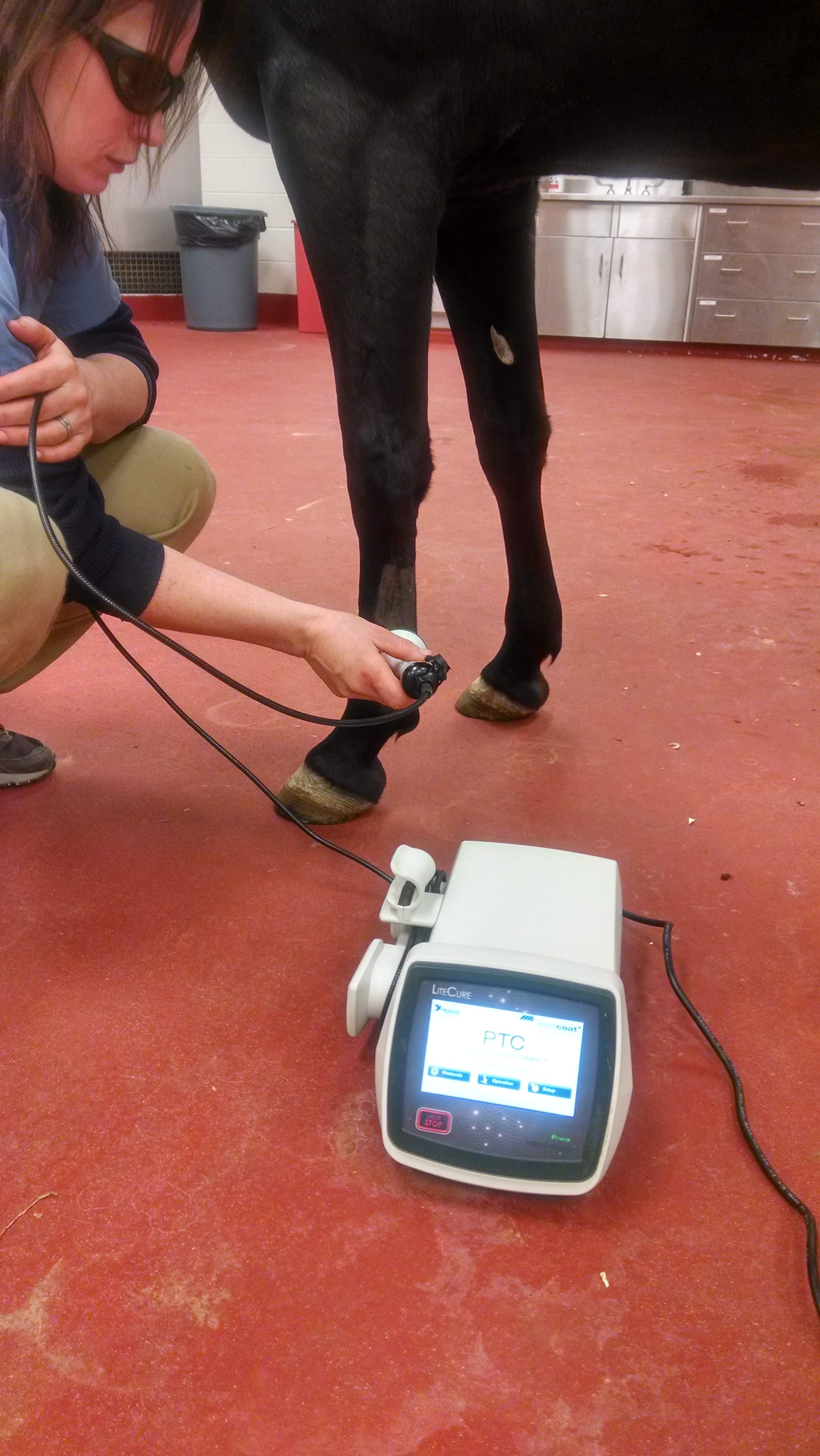Discover the Fantastic Benefits of Equine Therapy for Emotional Healing
Wiki Article
Reviewing the Effectiveness of Laser Treatment in Equine Treatment for Injury Recovery
The evaluation of laser treatment's performance in equine injury rehabilitation hinges on numerous variables, consisting of recovery time, pain mitigation, and tissue regeneration. Vets regularly observe remarkable end results with laser treatment compared to conventional techniques, positioning it as an essential aspect in equine care. Equine Therapy.
Comprehending Laser Therapy
Laser therapy has actually ended up being a pivotal tool in vet medication, specifically in the treatment of equine problems. Known for its non-invasive nature and efficiency, laser treatment involves the application of details wavelengths of light to boost cells repair and decrease swelling. This restorative method is increasingly preferred for its ability to increase the recovery process in horses struggling with a variety of musculoskeletal injuries and persistent conditions.The key system behind laser treatment is its ability to enhance mobile features. Additionally, laser treatment promotes vasodilation, boosting blood flow and oxygen shipment to broken cells, thus speeding up recovery.
In equine medication, laser therapy is particularly helpful for problems such as tendonitis, osteo arthritis, and wound healing. The technique is lauded for its pain-relieving buildings, permitting equines to restore mobility and function much more rapidly. Vets additionally value its very little side effects compared to other treatment modalities, making it a trusted and safe option for equine care.
Exactly How Laser Therapy Works
To understand exactly how laser treatment works, it is necessary to dig into the interaction in between light energy and biological tissues. Laser therapy, likewise called Low-Level Laser Treatment (LLLT) or photobiomodulation, utilizes specific wavelengths of light to penetrate cells and stimulate cellular processes. The system rests on the absorption of photons by cell chromophores, primarily within the mitochondria, which are vital for power production.Upon absorption, these photons set off a collection of biochemical adjustments, boosting mitochondrial function and leading to boosted adenosine triphosphate (ATP) production. This rise in ATP accelerates mobile metabolic process, promoting tissue fixing and regrowth. In addition, laser treatment modulates inflammatory responses by influencing cytokine levels and reducing oxidative stress, therefore alleviating discomfort and swelling.
One more significant aspect of laser therapy is its function in enhancing microcirculation. The therapy promotes vasodilation, improving blood flow and oxygen shipment to broken tissues. This helps with the elimination of cellular particles and sustains the expansion of fibroblasts and collagen synthesis, crucial for injury healing.
Clinical Evidence
The efficacy of laser therapy in equine treatment has actually been validated via numerous medical researches, showcasing its healing potential across a variety of conditions. A number of regulated trials and observational studies have documented considerable enhancements in visit homepage tissue fixing, pain decrease, and total rehab timelines. A research carried out by Turner et al. (2012) showed that equines treated with low-level laser treatment (LLLT) for ligament injuries showed increased healing contrasted to those receiving standard therapies. The research highlighted a significant reduction in swelling and boosted collagen formation.Likewise, study by Johnson and colleagues (2015) focused on equine muscle injuries, exposing that laser treatment dramatically expedited muscular tissue fiber regrowth and reduced muscle mass stiffness. Medical assessments have actually revealed that laser treatment can alleviate persistent conditions such as osteoarthritis.
Veterinarian Insights
Vet professionals have increasingly acknowledged the value of laser treatment in equine treatment, citing both empirical evidence and firsthand experience. Dr. Jane Smith, a leading equine vet, notes that laser treatment has revealed exceptional efficiency in minimizing inflammation and increasing cells repair service. "In my technique, I have actually observed faster recovery times in equines treated with laser treatment contrasted to conventional approaches," she specifies. This sentiment is echoed by Dr. John Doe, who stresses that laser therapy uses a non-invasive choice with marginal negative effects, making it especially matched for equine clients.Vets also value the flexibility of laser therapy. It can be utilized for a variety of problems, from shallow injuries to much deeper bone and joint injuries. Dr. Emily Brown highlights its utility in treating problems like tendonitis and osteo arthritis, where conventional therapies often fail. She mentions that laser treatment can be tailored to the details requirements of each equine, official statement making sure optimal end results.

Practical Factors To Consider
A vital facet of applying laser therapy in equine therapy entails recognizing the useful considerations that guarantee its efficiency and security. Firstly, it is crucial to select the proper laser device, as numerous types vary in wavelength, power, and penetration deepness. Veterinarians must be fluent in these parameters to tailor treatment procedures effectively to every injury typeMoreover, the regularity and duration of laser therapy sessions require cautious planning to make best use of healing benefits while lessening any type of prospective damaging results. Constant surveillance of the steed's action to therapy can lead essential adjustments in the treatment routine. Establishing a safe and controlled atmosphere throughout therapies is additionally essential to protect against accidental exposure to laser discharges, which can harm both the horse and the handler.
Educating and qualification of employees carrying out laser treatment are critical to make certain appropriate technique and to copyright safety and security criteria. Additionally, preserving accurate documents of official source each session, including laser settings and observed outcomes, is vital for evaluating the total efficiency of the treatment and for making data-driven decisions.
Final Thought
Laser therapy has actually emerged as an effective method in equine injury recovery, using significant advantages in recovery time, discomfort relief, and cells recovery. For ideal outcomes, continuous tracking and individualized treatment protocols continue to be important in leveraging the full potential of laser treatment in equine treatment.Report this wiki page